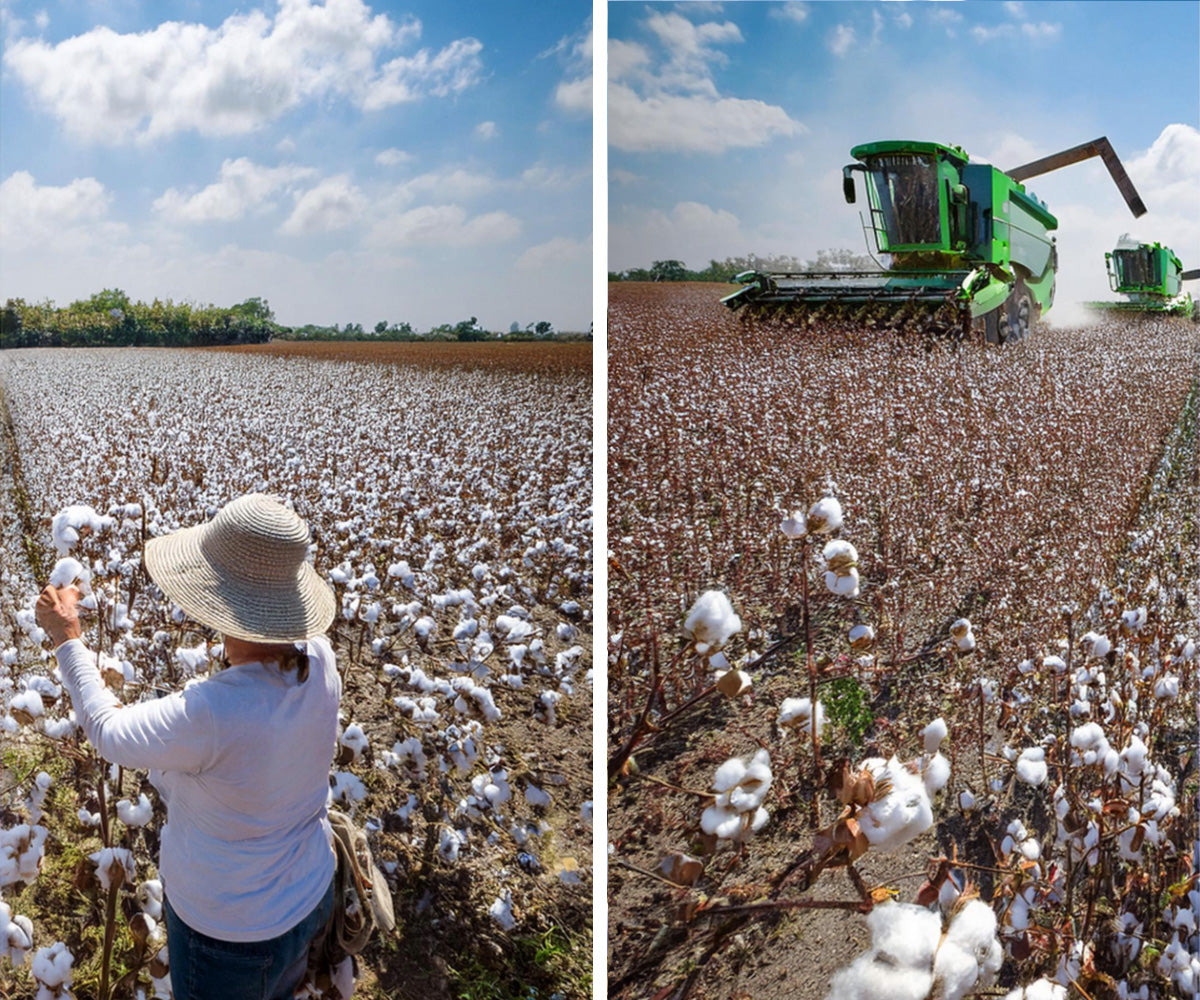ORGANIC COTTON VS. REGULAR COTTON
So, it’s no secret that organic products are known to be healthier than regular or conventional ones; think tampons, fruit, meat, and make-up. It’s one of our most asked questions, but what does it mean for my body and our environment?
We’ve summed up the 5 main reasons why organic cotton vs. conventional or chemical cotton, is safer for our bodies, the environment, and those who produce it.
" Organic tampons, organic pads, organic underwear... It just makes sense "

When farming, organic cotton requires a lot less water than conventional cotton. According to the nonprofit organization Textile Exchange, 70% to 80% of organic cotton is estimated to be rain-fed rather than irrigated.
This means that organic cotton isn’t competing for precious local water resources.
According to the Textile Exchange, organic cotton emits 46% fewer greenhouse gas emissions than conventional cotton simply by not using nitrous dioxide-releasing fertilizers and pesticides and using fewer mechanized farming practices.
By virtue of being fertilizer and pesticide-free, the soil also acts as a ‘carbon sink’, absorbing CO2 from the atmosphere.
Organic cotton is treated without toxic chemicals.
Conventional cotton is treated with harmful chemicals that can wreak havoc on wearers — from rashes and itchiness in those with sensitive skin to known carcinogens like formaldehyde that have been linked to cancer.
To name a few of the harsh additives: heavy metals, ammonia, formaldehyde, petroleum, chlorine, and phthalates.
Organic cotton is handpicked, without the use of machinery, chemicals, or defoliants. Handpicking reduces waste in the farming process and is totally safe for workers.
Organic cotton goes hand-in-hand with fair trade standards, where it was produced in a safe work environment that treats workers fairly.
It might seem like a small step towards a more environmentally conscious world, but little by little we can get a long way. Try to acquire things that are natural, certified organic, and toxic-free. We are all in this together, and together we can make the world more sustainable.
Not all organic cotton is certified organic. Our cotton is certified GOTS organic! Click here to learn more about all of our certified toxic-free fabrics.






































